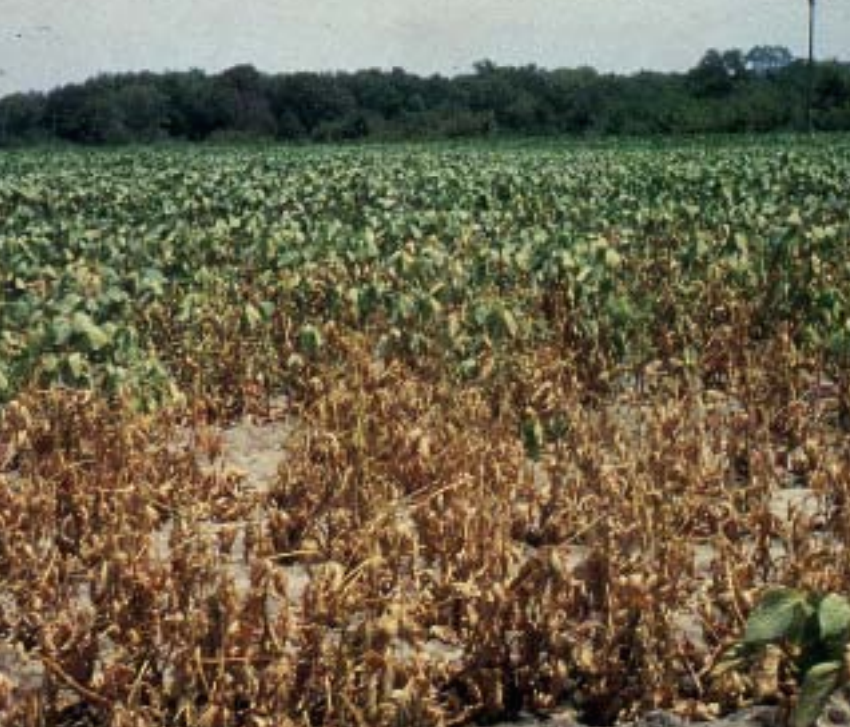The fungus causing charcoal rot survives in the soil and directly infects the roots. Severe losses occur frequently on nonirrigated soybeans, especially during hot, droughty periods. The disease is most common in eastern Kansas. Plants turn yellow and die slowly, but leaves remain attached. The symptoms are easily confused with drought stress. Small, black, fruiting structures known as sclerotia form on the lower stem and in the pith. Any management practice that promotes moisture conservation (reduced planting rates, no-till, weed control, irrigation, etc.) will reduce losses. All varieties are susceptible, but late-maturing varieties are more tolerant than early-maturing varieties.
Taken from Kansas State University Agricultural Experiment Station and Cooperative Extension Service Publication #C-449. Soybean Diseases, Dr. Douglas J. Jardine, Extension State Leader, Plant Pathology Program.

